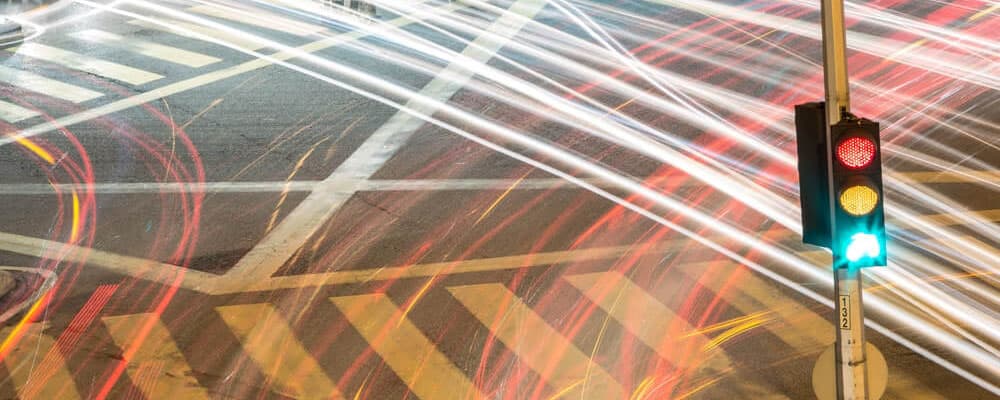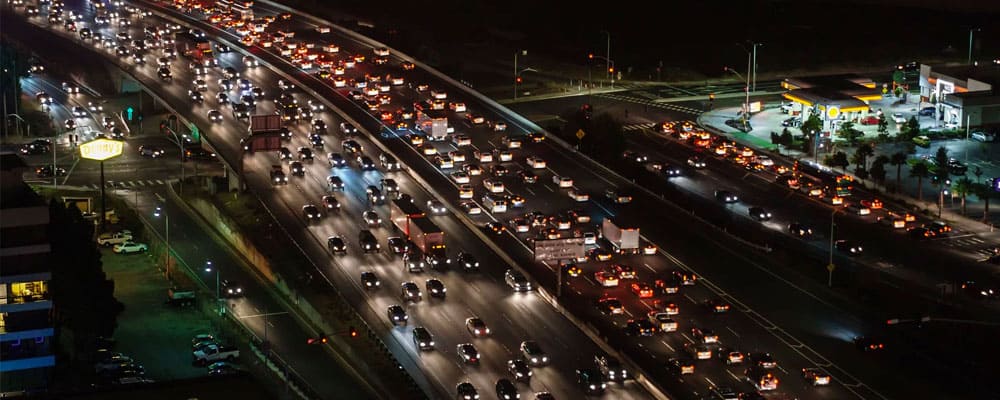
3 Challenges With Transportation Data Collection and How to Solve Them
Jump Ahead

At the heart of every transportation project lies the need for mobility data. But actually getting accurate, comprehensive data in a cost-effective, appropriate, and timely manner is not always easy. Many transportation planners must rely on costly, outdated data or use time-consuming, assumption-based models to estimate behavior. Although surveys and sensors can certainly reveal important insights, planners who rely solely on conventional data collection tools often struggle to answer important travel behavior questions empirically, accurately, and comprehensively. But transportation planners can take control and get better results by taking advantage of new, more cost-effective, and more efficient data collection and analysis tools. In this blog post, we’ll discuss three key transportation data challenges, and how to overcome them by collecting data that is current and precise, and that describes real-world travel patterns.
The Status Quo
Due to both limited data collection budgets and inadequate data collection tools, projects can fall short of meeting localities’ evolving needs because they do not fully account for current travel patterns. Conventional methods and the data they produce (i.e.: inaccurate models calibrated with old data, incomplete trip information from tools like Bluetooth sensors, and license plate photographs matched to DMV records), do not give transportation planners all of the information they need to understand, evaluate, and forecast communities’ needs. Instead, they must extrapolate and estimate from the limited data sets available. And in some cases, political priorities can overshadow the priorities that the real-world data points to.
Challenge #1: Limited Budgets for Data Collection
Working with limited budgets means that transportation planners are often competing with other agency priorities for their projects. Creating competitive proposals without the proper data foundation makes it difficult for planners to capture the funding they need to develop proactive, long-term transportation projects.
When they rely on data that policymakers and civilians do not trust or do not fully understand, planners often fail to build buy-in from political actors, and they struggle to attract champions that will push their legislative priorities forward. As a result, many transportation agencies are forced into a pattern of short-term, and often expensive, fixes, or they find themselves pursuing “pet projects” instead of the ones that will make a long-term impact. For example, they repeatedly expand highways instead of finding permanent ways to reduce travel demand. Breaking this cycle requires a solid data collection and analytics tool.
Moving to an approach that prioritizes real-world data allows transportation planners to be more strategic in their funding requests, and to build a stronger base of support from policymakers. Real-world data allows planners to more objectively evaluate the long-term value and return-on-investment for each potential project, and present persuasive cost-benefit analyses to policymakers. This makes it easier to make the case for more funding because they can prove how each project they propose will add value, and rank them for stakeholders in order of impact.
This data-driven approach also makes it easier to access more varied sources of funding from private and public local, state and national sources. With the funding of the FAST (Fixing America’s Surface Transportation) Act in December 2015, Congress provided $305 billion for transportation issues from fiscal years 2016 through 2020. Funds have been earmarked to upgrade and build rail mass transit systems in major cities and upgrade facilities and buses of local transit agencies, according to the American Road and Transportation Builders Association. The act also provides billions to build and maintain highways, railroads, airports, and waterways.

See the data in action, register for our live demo
Register NowChallenge #2: Collecting The Right Information Efficiently and Cost-Effectively
Cities are full of potential data sources, from red light cameras to CCTV cameras, but finding ways to efficiently, legally and cost-effectively collect that data is difficult. Without the right data tools, many transportation planners are stuck with inadequate, infrequently updated sources like household surveys that are conducted at the state and national levels. These surveys are rarely updated, and they tend to focus on high-level trends. Using such broad and often stale data makes it nearly impossible for planners to be proactive about the needs of their specific community’s changing demographics. The data are also typically not specific enough to provide instructive insights for granular geographies, such as individual intersections. Unfortunately, conducting local surveys to obtain the data required is cost-prohibitive for many communities.
Once planners are able to collect data from more varied and up-to-date sources, they can start moving in sync with their community’s needs. According to an article on Geekwire, one way Seattle was able to better analyze and understand bus ridership was using payment cards and sensors to collect more than 20 million individual data points like location, route number and time of boarding. This is a great example of how a city can take advantage of existing data that is already being collected for a different purpose.
By using comprehensive, real-world data instead of relying on intercept or household surveys and then modeling behavior to estimate travel patterns, Seattle was able to create a data set that was truly persuasive to stakeholders. Thanks to this foundational knowledge based on observed trends, the city was able to identify the specific problems that caused the greatest mobility challenges for the largest number of people more effectively. Monitoring the data over time allowed planners to understand trends in bus ridership and move quickly to address the overcrowding issues that would have the greatest impact on user satisfaction.
Challenge #3: Understanding What the Community Truly Needs
Without frequently updated, comprehensive, and accurate data, it’s difficult for transportation planners to get a clear picture of their community and its transportation needs. Using data from the surveys that are five to 10 years old forces transportation planners to be purely reactive or worse — to guess at what the city needs, or respond to the city’s loudest constituents instead of its greatest challenges.
To put it in perspective: the first ridesharing service, Uber, was established in 2009, and the company did not launch its popular “UberX” service, which dramatically expanded its driver base and ridership, until June 2013. It is unquestionable that this service and its competitors have dramatically changed travel behavior, especially in urban areas. However, the last National Household Transportation Survey (NHTS) used data collected from April 2008 – April 2009, before these services were widely available. While an updated NHTS is currently underway, the results have not yet been published.
With many cities like Seattle booming and creating transportation issues that affect residents’ ability to get to work, school, and recreation, planners cannot let negative issues such as congestion impact their city’s economic future. However, evaluating those issues using out-of-date information prevents them from forecasting the impact of infrastructure and policy solutions.
Mobile apps have also transformed the way people access information in their personal lives, and it’s now an expectation that all data will be accessed in real-time. Taking snapshots of real-time data as simple as the number of people boarding a bus empowers transportation planners. Not only can they more effectively allocate resources and create the best routes, they can use that data to better forecast usage and long-term transportation needs. With a growing emphasis on public transportation, a city must have options to meet its residents’ needs. Promising a solution “soon” isn’t going to create the kind of user-friendly options that cities need.
For example, transportation planners are looking at ways to track traffic flow and could use that data to help identify better areas to locate office parks as well as where more capacity is needed for roads and public transportation. Instead of simply adding more lanes or public transportation routes, transportation planners can look at ways to better use their existing resources without the added expense and user impact that construction brings.
Transforming Your Transportation Data Process
By moving to a more accurate, comprehensive, and precise data collection tools, transportation planners can revolutionize the way they collect and analyze transportation data. No longer held back by outdated and inadequate data, transportation planners are now able to be responsive to their community’s evolving needs.
With more powerful forecasting that is informed by real-world data, transportation planners are able to address any potential issues before they become massive problems. With this knowledge, they can also present more realistic budget requests and get the funding they need the first time, instead of making multiple requests, and possibly being denied the full funding they’re seeking.

See the data in action, register for our live demo
Register NowReady to dive deeper and join the conversation?
Explore the resources listed above and don’t hesitate to reach out if you have any questions. We’re committed to fostering a collaborative community of transportation professionals dedicated to building a better future for our cities and communities.